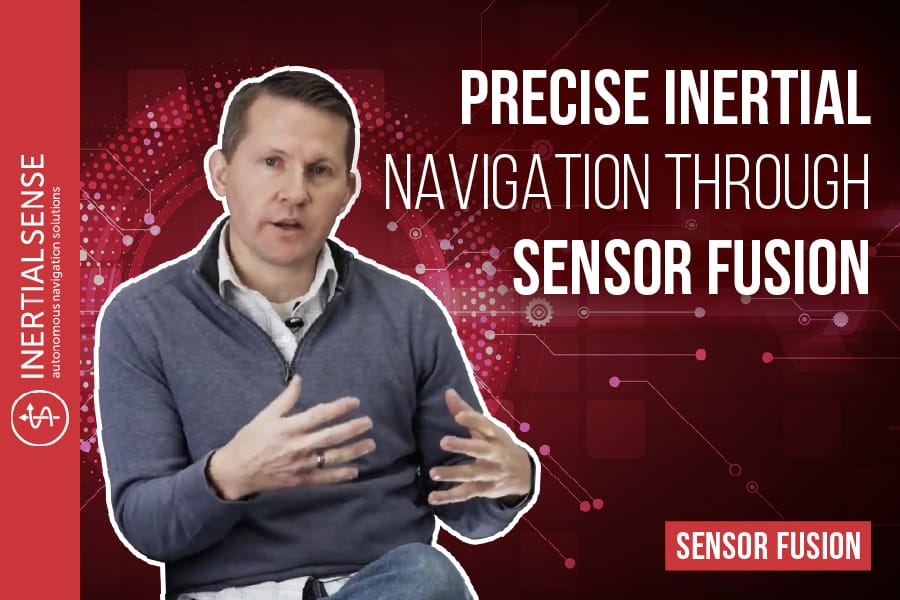
Precise Inertial Navigation Through Sensor Fusion
Watch the video below as Walt Johnson, the CTO and founder of Inertial Sense talks about the importance of sensor fusion, the formation of Inertial Sense and how the team created the company based on past experiences in the drone industry and autonomous navigation landscape for hand launchable drones.
What is Our Technology-Based On?
Our technology is based on the fusion of IMU data, which is gyro and accelerometer data, or the measurement of the rotation and the linear acceleration of a vehicle. We take that information and integrate that information. Think of an odometer on a wheel of a vehicle – it counts the distance traveled. The whole idea is to do what a person does with their own sensing capabilities to estimate what is really going on.
Can This Data Be Used With Any Product?
The product we create serves people that have moving platforms i.e. drones, ground vehicles, boats, needing more information than the GPS provides. Customers can buy our products, integrate those to their platform, and can utilize it to identify orientation and location. This information can then be converted to a geo point.
Achieving Precise Inertial Navigation Through Sensor Fusion
Whether you’re trying to control the system, your system needs stabilization, needs stability for autonomous navigation, or trying to geo-locate objects in the distance, our inertial navigation systems are used to provide the data and to aid in those solutions.
Contact us today to learn more about achieving precise inertial navigation through sensor fusion.
Learn More:
Video Transcription:
I’m Walt Johnson. I’m the CTO and founder of Inertial Sense. I created the company based on experience, a background we have in the drone industry, and autonomous navigation for hand launchable drones.
As we created the company, it was based on knowledge and experience of the value of inertial navigation used for guidance for these types of vehicles, these platforms.
Our technology is based on the fusion of IMU data, which is gyro and accelerometer data, or the measurement of the rotation and the linear acceleration of a vehicle. We take that information and we integrate that information, much like an odometer that is on a wheel of a vehicle on the ground. So it counts the distance traveled in effect.
So we take gyro and accelerometer data and we integrate that to estimate the state or the orientation, the roll pitch heading, and the velocity and position of the vehicle. We do that using GPS to aid the solution magnetometer, barometer, and other sensors. But the whole idea is to do what a person does with their own sensing capabilities to estimate what’s really happening, where any one of these sensors themselves can’t measure what in and of themselves.
So it’s the fusion or the combination of these sensors. It’s for vehicles that are moving in free space and three dimensions, and need to know exactly how much they’ve moved or displaced over time.
The product we create serves people that have moving platforms, drones, ground vehicles, boats, that need to know more than what the GPS can tell them alone. So you take IMU data, you take the GPS, our solution fuses those together. So our customers can buy our products, which will be, and you know, an IMU, an ahars, or an INS. They strap those to their platform, and oftentimes they’re trying to identify not just the orientation of the platform and the location. But they want to know what’s the coordinate of something they’re looking at off in the distance.
So they can use the information that we provide with their camera or their system that’s locating, and they can convert that point into a geo point. Whether it be you’re trying to control the system, you’ve got a system that needs to be stabilized, it needs stability to navigate autonomously, or you’re trying to geo-locate objects in the distance, our systems are used to provide the data and to aid in those solutions.

